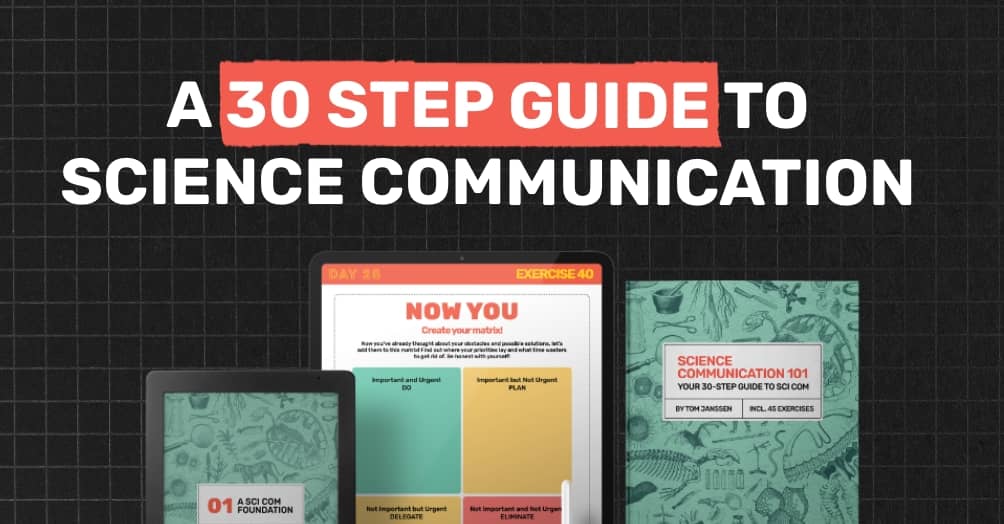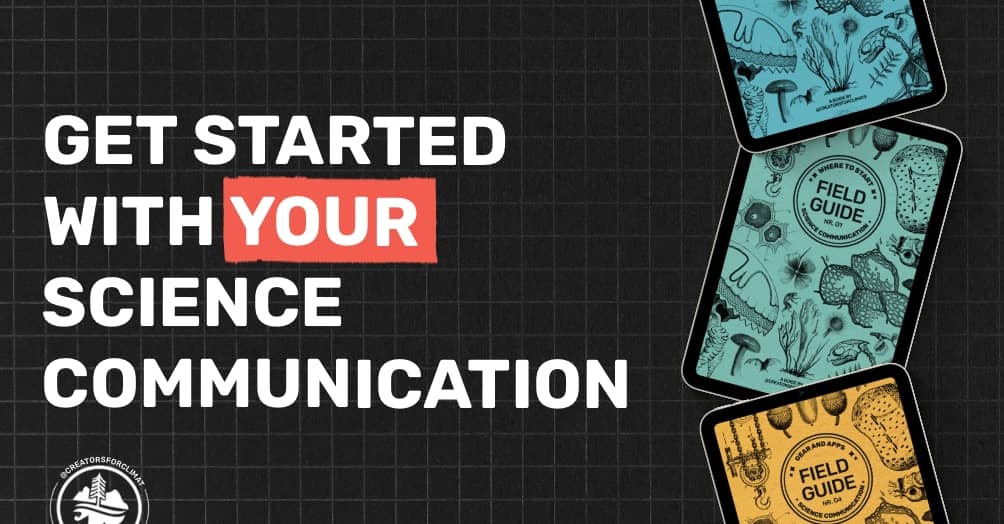Imposter syndrome has been showing up a lot lately. I’ve heard it at nearly every event, panel or Q&A I’ve been part of. So in this entry, let's have a look at what goes on behind the scenes.
You can hear it in the questions after a talk, in the quiet conversations while networking, across YouTube, LinkedIn and podcasts. Sometimes it’s direct. Other times it’s buried in the subtext.
That’s why I wrote this entry. It’s a reflection on lessons learned from other creators, science communicators and the conversations with peers and friends who, occasionally, hold up that mirror for when I'm in this mindset myself.
What this is not: a list of quick tips or a mindset trick to “beat” imposter syndrome. Instead, it's an invitation to look beneath the surface. To give this experience language and space.
P.S. I've written a more in depth article about this for the toolkit. You can find that below!
📲 Building in public - Project update
Workbook and community
✅ On track - 🟠 In progress - ⭕️ Exploring
|
🪞 I’m not good enough
That sentence isn't always heard out loud. But it’s there. It’s in the pause before you hit publish, in the hesitation before speaking up and in the quiet comparison loops that play in your head.
For years, I carried that feeling without a name. But now we know it by the term Imposter syndrome.
The feeling of being a "fraud" in your environment, that lingers on even when you’ve done some work internally. And if you’re someone who cares about your work (about truth, creativity and impact) it tends to hit even harder. Especially in our green creator space, where this work can give us purpose and meaning. If this sounds familiar, this entry is for you.
We’ll explore the deeper layers of where that voice comes from. How it’s shaped by early scripts, social pressure, and perfectionism. Not to “fix” it. But to see it for what it is. To create space around it. And, when you’re ready, to begin shifting from self-doubt to self-authorship.
👀 The layers and patterns behind it all
Imposter syndrome is rarely just a passing thought. It’s built from deeper material. Old expectations, personal histories, cultural norms,... Patterns that were never ours to begin with.
Many of us learn early that love or validation is tied to performance. That being smart, useful or talented earns us a sense of belonging. “We are worth something if we can mean something to others.”
Maybe you grew up in a house where mistakes felt unsafe. Maybe school trained you to compete instead of collaborate. Maybe every time you questioned your confidence, someone rewarded your overachievement instead of asking why you were so hard on yourself.
These stories get reinforced in subtle ways. Especially in the science and creative fields, where we often feel like we have to prove ourselves over and over. When your work is public, the risk of being seen also becomes the risk of being doubted. So we look for the perfect reference, to be as complete as it gets. Or to have thousands of views or other vanity metrics attached to our worth. Because then, only then, we mean something.
But when we trace that feeling back, it often leads somewhere older. Some early script provided by your parents (and the generations before them). Some lessons learned from your culture, or religion, or the social circles you're part of. They all teach us, in a way, how we should behave.
💻 Pushing through is not a fix
Most people don’t get rid of imposter syndrome. They get better at hiding it. They stay quiet in meetings. They over prepare for talks (that's me). They work twice as hard just to feel like they deserve to be there. And maybe that works for a while. Until it doesn’t.
What’s difficult is that this looks like success from the outside. But internally, it creates burnout, isolation and a constant fear of being “found out”.
There’s nothing wrong with wanting to improve your skills. But if that drive is built on fear of failure, it becomes a trap. You end up "performing" competence instead of building confidence. And the gap between those two grows wider the more pressure you’re under. I felt this, hard, when I made the jump to filmmaking. Everything was new, and I NEEDED to fit in.
What can help is noticing the story. Seeing where it comes from. And seeing it for what it is, a story we tell ourselves. Realising that the voice of "you’re not good enough" might sound like you, but it isn’t you.
Once you stop needing that voice to go away, you can start building something steadier underneath it. And that starts with, you guessed it, ✨feeling your feelings✨.
💡 A different side of the spectrum
Imposter syndrome doesn’t just disappear. But something shifts when you stop organizing your work around outside validation.
Over time, I’ve noticed two very different ways people tend to operate. You could say: two sides of the same spectrum. On one side: working from expectation. You try to prove yourself, perform the role, perfect your output. You look outward first, and let your environment shape how you show up. You chase the metrics, the approval, the right phrasing and the validation. And it’s not always conscious.
(I can feel I'm working from this side now, while I'm writing this entry. Partly because I'm stretching into a field "where I don't know everything yet".)
But there’s another side. One that begins inward. Instead of asking “What will make them trust me?”, you ask “What do I actually want to say?” You’re not trying to earn your place, you’re working from a place that already knows you have one. From authenticity and authorship.
Expectation says: I’ll feel safe when others validate me.
Authorship says: I feel grounded when I work from my own values.
The shift between the two is uncomfortable. Sometimes we wobble. Some days, you’ll find yourself sliding back to the old pattern. But other days, we can lean into a new way of being.
🧰 Tools for your toolkit
None of this is linear. But there are things that help. Tools that don’t silence the voice completely, but give you space around it. For some of us, they might open the door just enough to see we could use professional help. For others, they are tools that help manage the shitty days.
Some of these are practices I return to on rainy days. Others are questions I’ve heard echoed by professionals, in deep conversations with friends and fellow imposters going through the journey, and across the science and creative communities I’m part of.
Tools like these, just to name a few:
- The observational space
- Journaling as dialogue
- The 80% rule
You’ll find these, plus the longer version of this article (15-20 min read), inside the the toolkit. It’s a deeper dive into the patterns, stories and shifts behind imposter syndrome.
If this entry resonated,
I think you’ll find something useful there too.
|
It’s not a guide to “beat” imposter syndrome. But it might help you see it differently. And from there, choose how you want to work with it.
📓 Creators For Climate Resources
And that's it for today. Below is the updated list of resources you can access and where you can download all the documents. That includes:

Join the waitlist
The 'Science Communication 101' course book is coming out soon. Join the waitlist to be notified when it's released?
|
|

Free field guides
Have you already grabbed your free field guides? These 4 entries will help you get a helicopter view on your science or climate communication.
|
✨ That’s it for now, until next time!
If you're reading this, I'm glad to have you on our journey. Thank you, you awesome human being!
|
|
Written by Tom Janssen
Creators For Climate
|